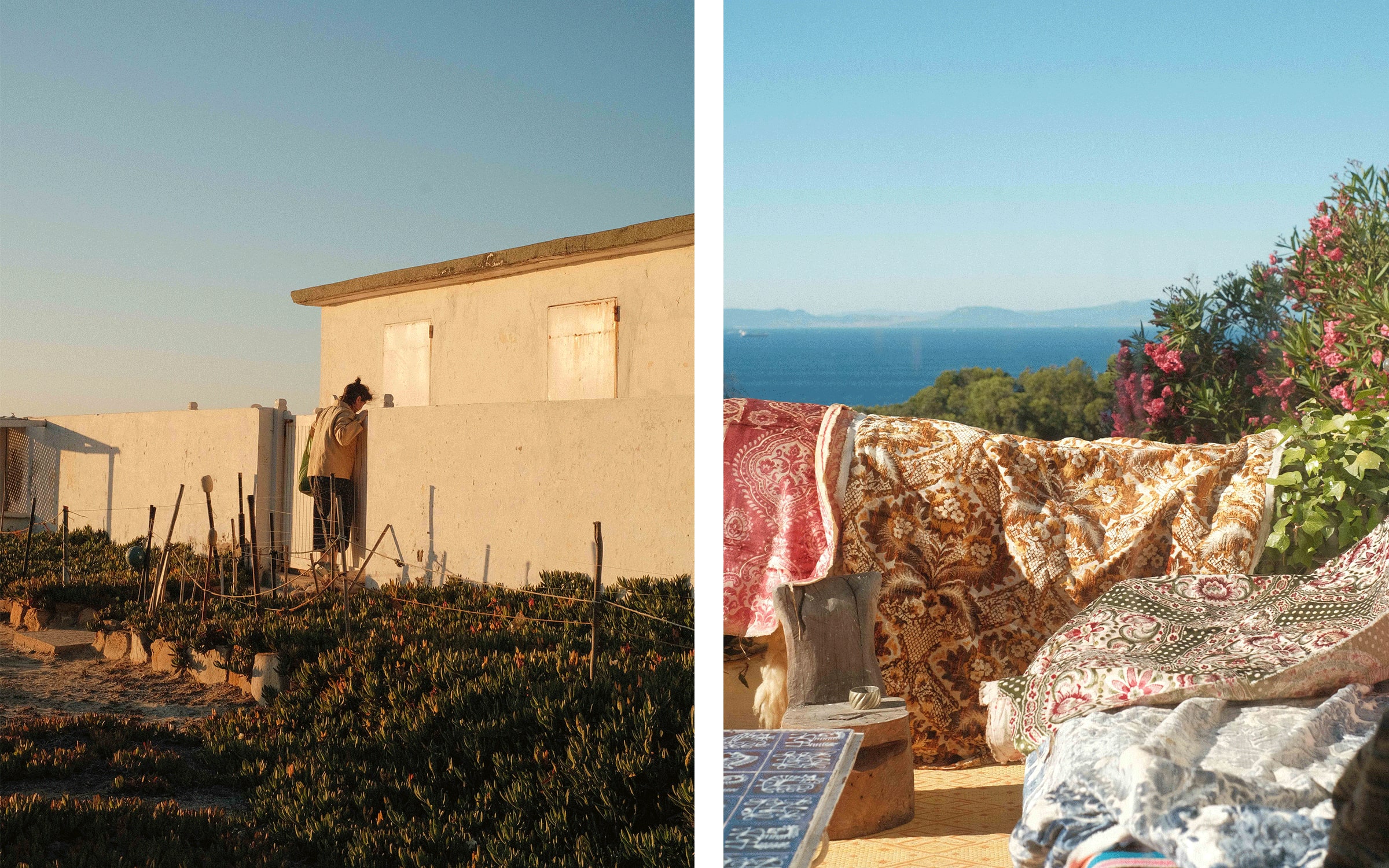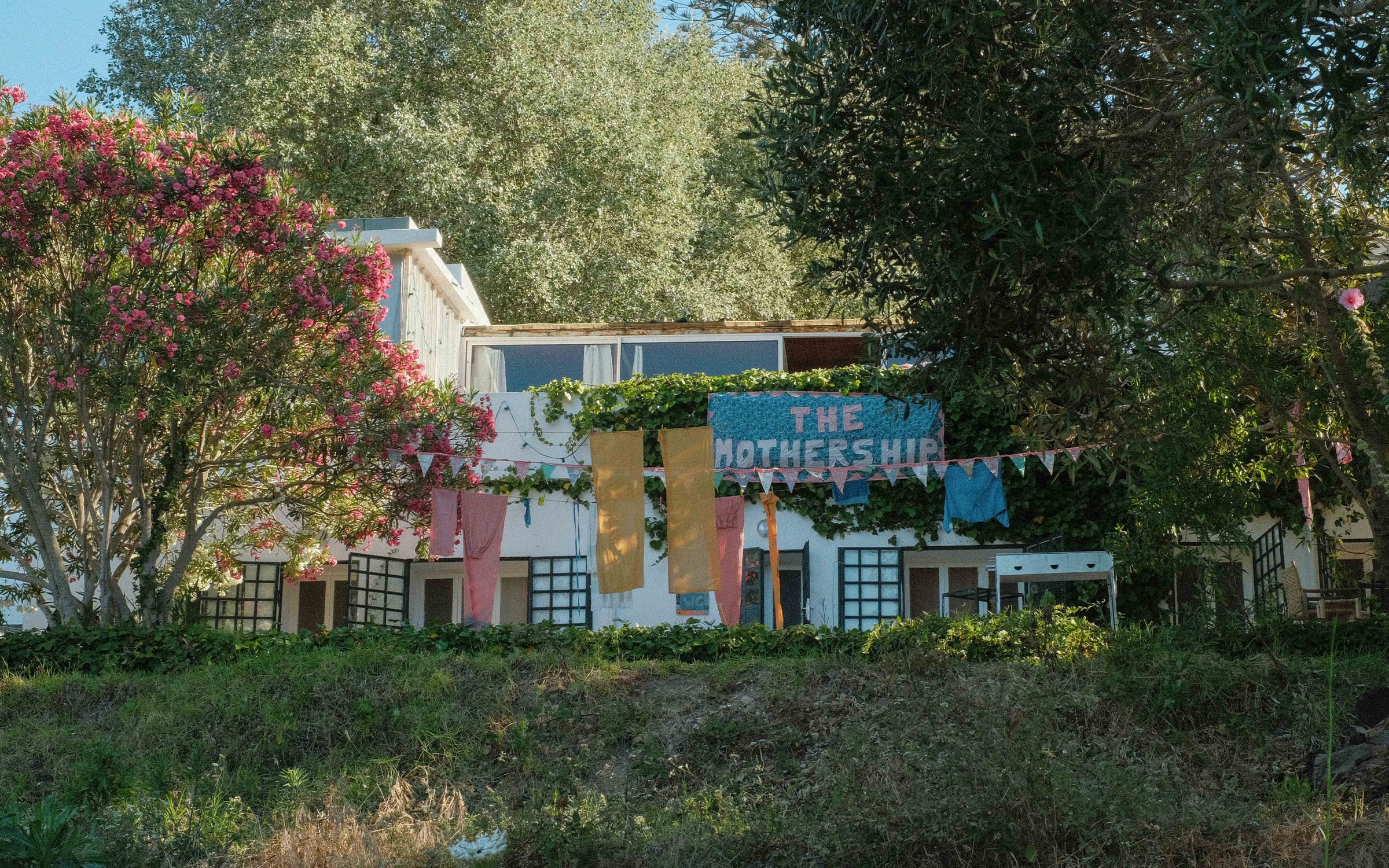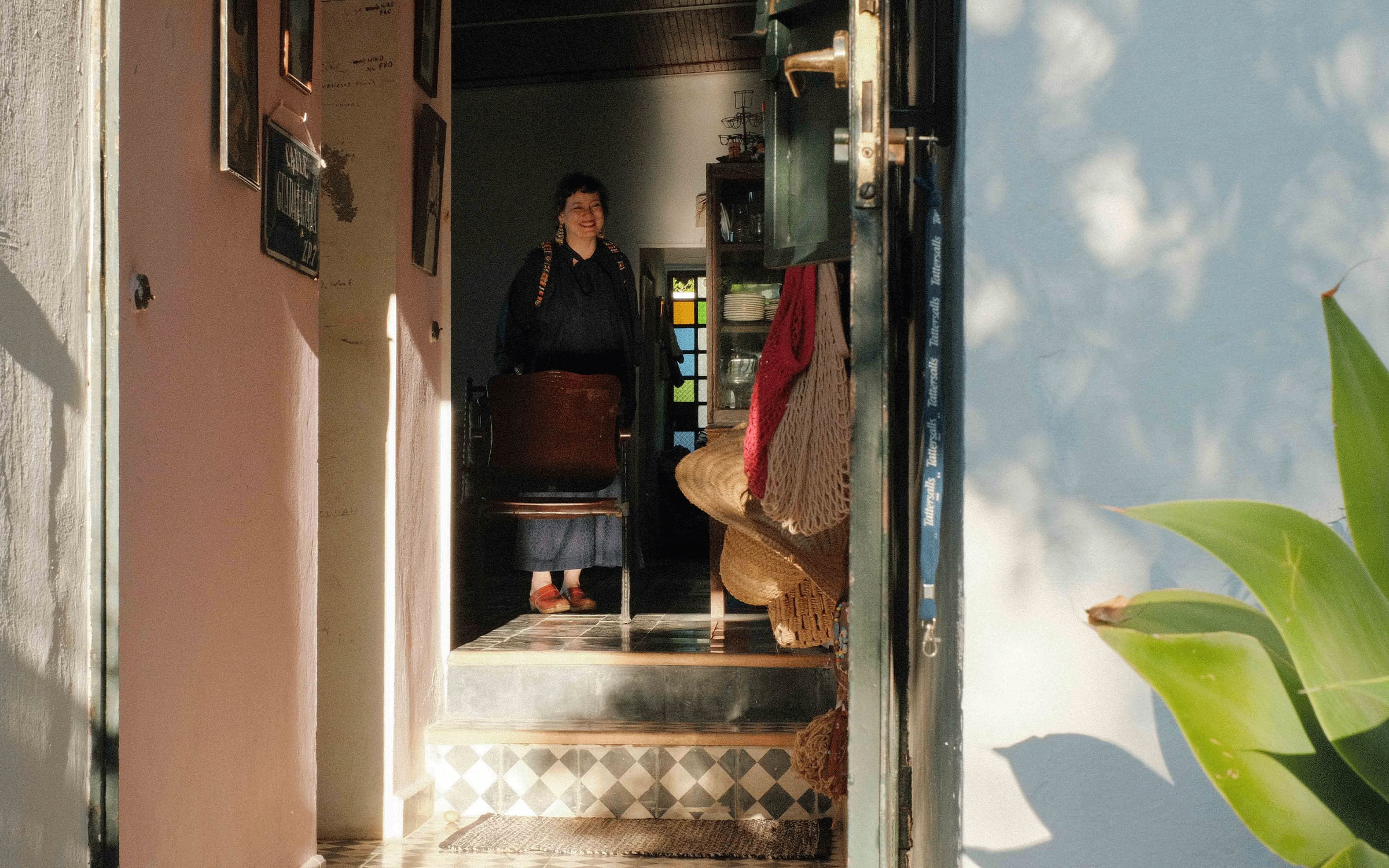
In the first interview in a new series dedicated to artists’ work beyond art, we (Art Basel) speak to Yto Barrada about her vision for The Mothership, a community-led research center grounded in the Moroccan landscape.
Artists don’t just make art. Over a decade ago, this realization led to the launch of ‘The Future of Art Practices: The Artist as …’, a series of Conversations conceived for Art Basel by Serpentine Galleries Artistic Director Hans Ulrich Obrist and Art Basel’s former Global Director Marc Spiegler. Launched in June 2011, it took stock of the fact that, not only most artists refused to be hemmed in by a particular medium, but also that they often operated outside the field of art altogether. Theaster Gates, Tracey Emin, and Ragnar Kjartansson are not only acclaimed players in the art world, they are also activists, poets, musicians… the list goes on and the horizons are endless. Obrist and Spiegler set out to explore this fault line. Between 2011 and 2015, they convened over 10 panels at Art Basel in Basel and in Miami Beach exploring topics ranging from ‘The Artist as Urbanist’ to ‘The Artist as Choreographer’, culminating with ‘The Artist as Slow Traveler’, for which Paulo Nazareth walked from Belo Horizonte, Brazil to Miami Beach (narrowly missing his own panel).
These talks are the inspiration behind a new series of interviews, in which I will be asking artists about their activities beyond visual art. It starts with a conversation with Yto Barrada – who immediately challenged this art vs non-art divide! The French-Moroccan artist has received countless accolades. Her films, paintings, and sculptures have been exhibited in prestigious institutions from the Stedelijk Museum in Amsterdam to Mathaf in Doha. Yet she’s also always maintained a foot in the ‘real’ world. After a stint in Beirut where she worked at the Arab Image Foundation, in 2006 she cofounded the Cinémathèque de Tanger, which saved an historical movie theater from destruction and has become her hometown’s cultural epicenter. Also in Tangier, she recently opened The Mothership, a garden dedicated to the cultivation of traditional dyes, which features, as she explains below, a research center, a library, and an education program – among many other things. Here Barrada tells me how it came to be, what’s been achieved – and, crucially, what still needs to be done.

For several years, you’ve been working on a dye garden in Tangier, which is really gathering momentum now. How did it start?
It’s the story of a place. I grew up in a house with a forest garden overlooking the strait in Tangier. When I started working on the Cinémathèque 20 years ago, I moved into the gardener’s house. And just as the Cinémathèque was driven by the location, the gardener’s house is what inspired this project. My husband is American. We spent almost 10 years together in Morocco, and then moved to New York, which means that I’m in Tangier less often now. But the house needs to be lived in – and the garden needs to be cared for all year round! So I began looking for an intentional way to share it.
At the same time, in New York, I started being more involved in the textile community, and became an apprentice dyer. I studied under master dyers in Paris and Japan, and since we have a garden in Morocco, I did what dyers do and began foraging for dye materials and growing my own to understand how it all functions – to have my own varieties of indigo for blue, my own madder root for reds, and plenty of wildflowers for yellows and greens. By digging in, you discover what is under your nose: leaves, roots, barks, lichens, and mushrooms. Everything was under my feet: all I needed was to learn how to ‘read it.’
You started to get involved in dyes and textiles when your daughter went to a kids’ workshop – which is beautifully serendipitous when one knows of your own interest in pedagogy and kids’ play. Then this interest blossomed into a major, and far-reaching project that you’ve called The Mothership. Why the name?
There are different influences. George Clinton and Parliament Funkadelic is an obvious one. There’s also my mother, grandmothers – and mothers and daughters everywhere. My mother is the boss – the only boss. And then I have daughters and a lot of female friends with daughters… We started gathering in Tangier in the summer – in a way, that’s the prehistory of The Mothership. We would meet there with the kids, live, work and cook together, explore the city, and spend time with other artists who came to stay. The Mothership is a continuation of a community that already exists, and I wanted to extend it. I also need a lot of help with this project. The Mothership is both eco-feminist and afro-futuristic, but now we have a time and place. It doesn’t have to be imaginary.

It’s also a spaceship in a way, isn’t it?
Yes, it’s a place where you come and ‘re-source’ yourself. Right now, my priority is to explore different ways of gardening, preserving, and sharing plants and seeds. In Morocco, the artistic community has been at the forefront of these questions. Hassan Darsi has an experimental farm, La Source du Lion. Laila Hida from LE 18 built a garden on a rooftop. There’s a harvest festival, which puts together artists and different agricultural communities, started by ethnobotanist Gary Martin. There are also experiments in Rabat. Around Morocco, I have several mentors including Umberto Pasti and Sadek Tazi, who has an extraordinary plant nursery – a global compendium of species. So, I’ve been learning and listening. Now it’s time to put all this knowledge into practice.
The Mothership is transitioning from an informal entity into something more structured and organized. How do you see it evolving?
I see it as a self-regenerating research center. We hope that the artists and thinkers we’ll host in Tangier will do their own work and help us find creative solutions. The whole idea is to put the artists back at the center and to trust their forward-thinking imaginations. The residency will host workshops but will also allow people – mothers and others – to come, rest, have time to teach and think.
This idea of trusting artists resonates very strongly with the project of this interview series, which explores the many roles artists can play in society. What do you think artists in general – and maybe yourself in particular – bring to an initiative like this one?
My aim is very clearly to use imagination to come up with creative solutions for now. There is no time to waste. As an artist with a 20-year plus practice, I’ve seen, heard, and know about many experiments that would be really useful to bring back home. The Mothership is a collective and as a result we already have a huge community that goes all over Africa, all over Europe, all the way to America and Asia. We know teachers, professors, thinkers, and practitioners, who are all willing to come. We’ve already benefited from visitors like the Coloco landscape architects, interior designer Marion Mailaender, and artists like Elodie Pong, Isa Rodrigues, Lisa Lee Benjamin, and Cara Marie Piazza. While we have received support from the Arab Funds for Art and Culture and from Artangel, we need continued funding to build a fully sustainable and efficient program.
There’s a beautiful poem by Francis Ponge, where he says that the only thing you have to do, as an artist, is to open the door and fix the world. That’s exactly what we’re doing. I’ll take a very simple example: This is the second year of drought in Morocco. And there are lots of artists working in traditional ways of holding and caring for water, soil, and air in the south. There’s the multidisciplinary cultural residency space LE 18 in Marrakech, there are similar experiments in Amman and Beirut. Here in New York, students in architecture at Cooper Union are thinking about these sustainability questions. It’s a problem that requires an interdisciplinary approach. The Mothership can offer a large table to sit around, a growing book library as well as a textile library. As part of a network of nonprofits we have the potential to generate solutions that can be shared with others.

You said that artists must fix the world. And to fix the world, you stepped outside the realm of art. Do you feel that for artists to really have an impact, they need to operate outside the art world?
Step outside? I didn’t step outside, I’m in the middle of it! For me, this is not separate. Art is what fuels everything I do. The art objects I make don’t make sense without all the rest. The same applies across time: what’s the point, if we don’t learn from older artists and thinkers, apply everything we’ve assimilated, and all the failures we’ve had, and then transmit ideas and practice to younger artists?
Gardening really teaches you something about time. Did you feel that the introduction of a garden introduced a different kind of temporality into your work?
Absolutely, and here you touch on something very important to me. You feel very, very small in a garden because the more you know, the less you know. There’s something very spiritual about the role of a gardener.
Gardening is such a charged act. What you choose to plant is a political choice. In your case, you go back to native, almost wild plants. That’s a statement in itself, isn’t it?
No, that’s a survival strategy. Once you start looking closely at what foods are on your table, what clothes you wear – what fibers are in those clothes, what dyes, the industrial use of water, plants grown from seeds that are engineered specifically to not reproduce… Jumana Manna just had a show at MoMA PS1 in New York where she talks about foraging and the struggle of Palestinians deprived of the right to grow akkoub and za’atar. In Morocco it’s the same thing. There’s no foreign occupation, but the deals we’ve made with the European Community have turned the country into a monoculture, producing greenhouse strawberries and bananas for the rest of the world. Monoculture is very dangerous for ecosystems.
How do you link The Mothership and The Cinémathèque?
They’re siblings. The Cinémathèque has been a great platform for me to meet a lot of people. One question now is how we can use film to introduce notions of scarcity of water, plant politics, the naming of things, history, to a broader local audience.

That’s another important point: The Mothership isn’t about waiting for institutional validation, but about creating a self-sufficient infrastructure.
Yeah, it’s true, but let’s not romanticize it. The clock is ticking. I would like to bring resources home faster. Finding the right kind of funding matters so much. We are lucky to have been supported by visionary institutions like Artangel, AFAC, and Fondation Jardin Majorelle, which has supported the Cinémathèque for years. But we’re also precarious, because grants have short runs and The Mothership is in a critical growth phase right now. Finding new grant partners is particularly important because state funding doesn’t exist yet in Morocco on the scale that we would need and local thinkers are still considered a little bit marginal.
How do you hope to fund The Mothership? I understand that you are looking for benefactors. What do you need? What’s the model?
The model would be to have a network of ambassadors who link us organically with grantmakers, and for us to partner with other sustainability and residency programs. I would also like to use the capacity and craft which is very much alive in Morocco to offer artists the possibility of producing art here within a collaborative framework. The country has suffered enormously from the COVID-19 pandemic, but we are getting back on our feet. And the climate crisis has only accelerated the necessity of what we’re doing.
Yto Barrada is represented by Sfeir-Semler Gallery (Beirut, Hamburg), Pace Gallery (New York, Geneva, Hong Kong, London, Los Angeles, Palm Beach, Seoul), Galerie Polaris (Paris), and Goodman Gallery (Johannesburg, Cape Town, London).
Coline Milliard is Art Basel’s Executive Editor.
Photographs by Ouaziz Anass, originally commissioned and published by apartamento. Courtesy of Ouaziz Anass.


Leave a Reply